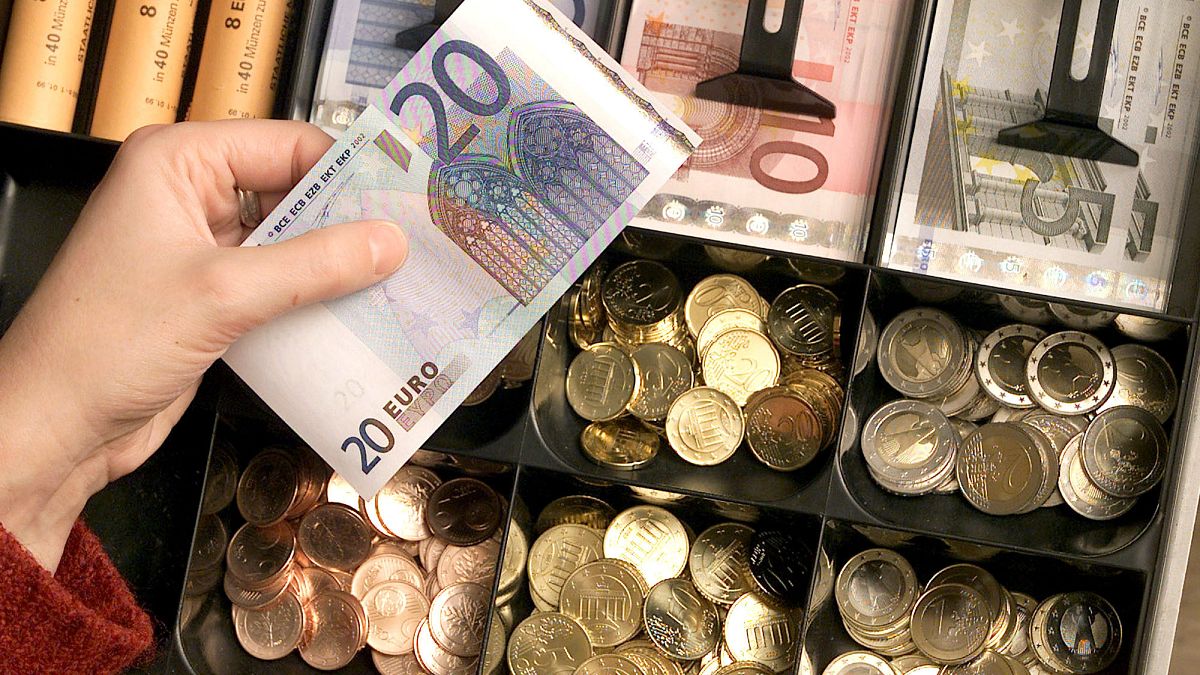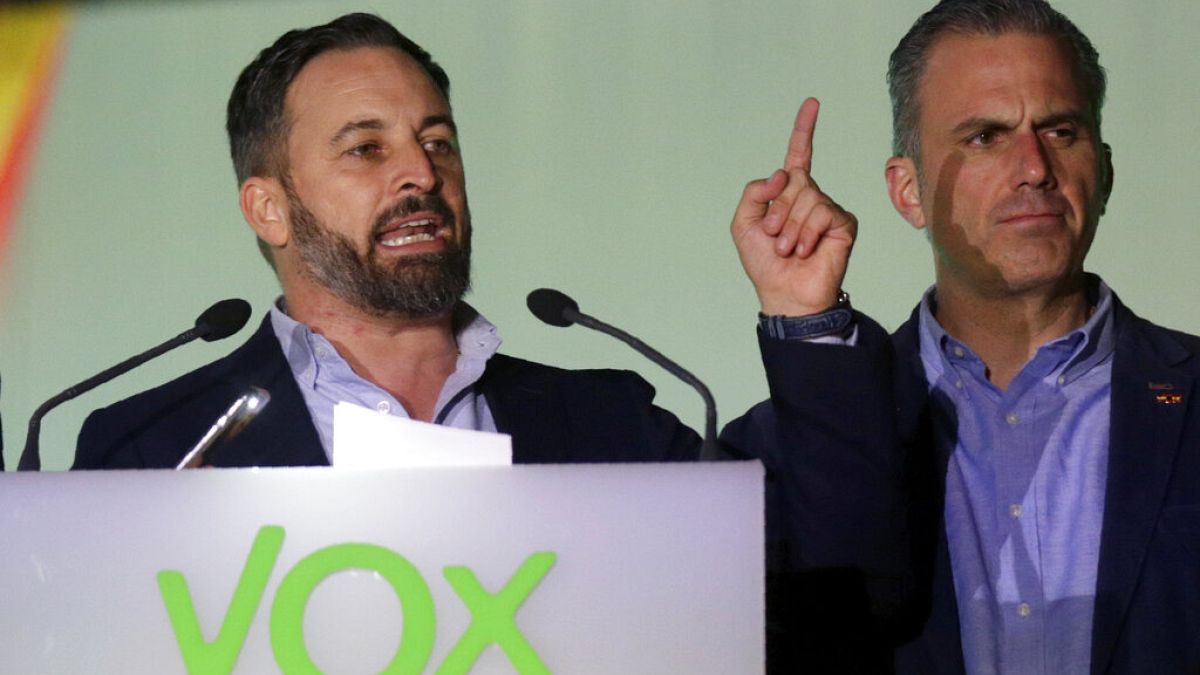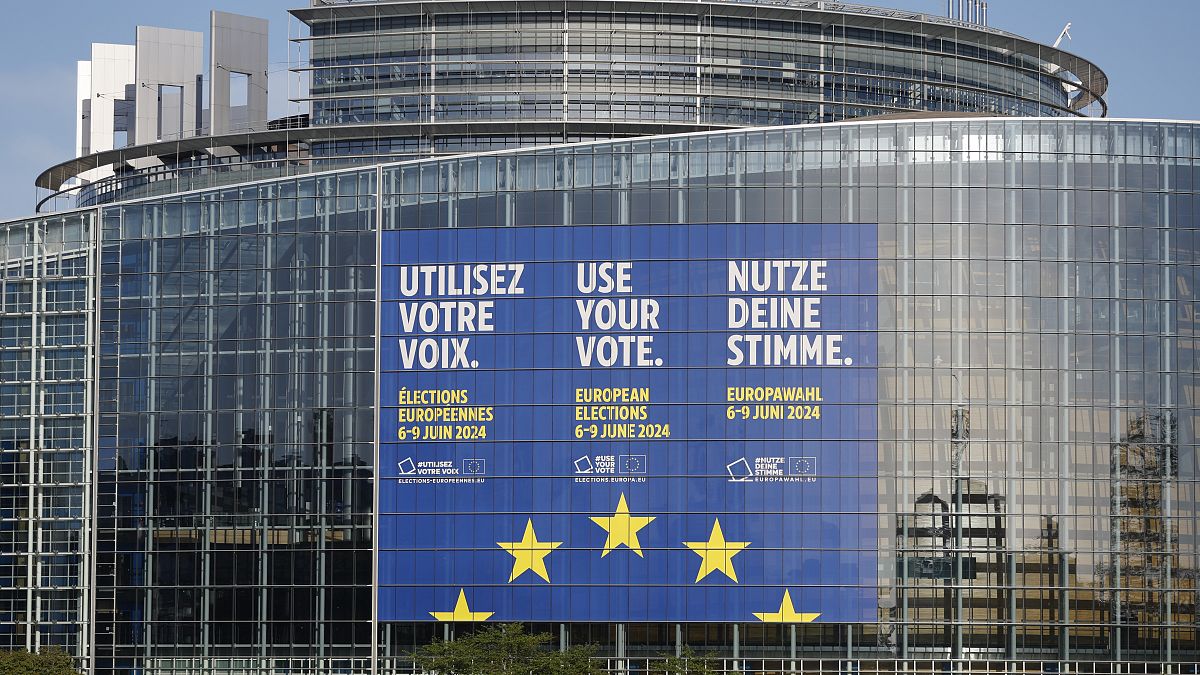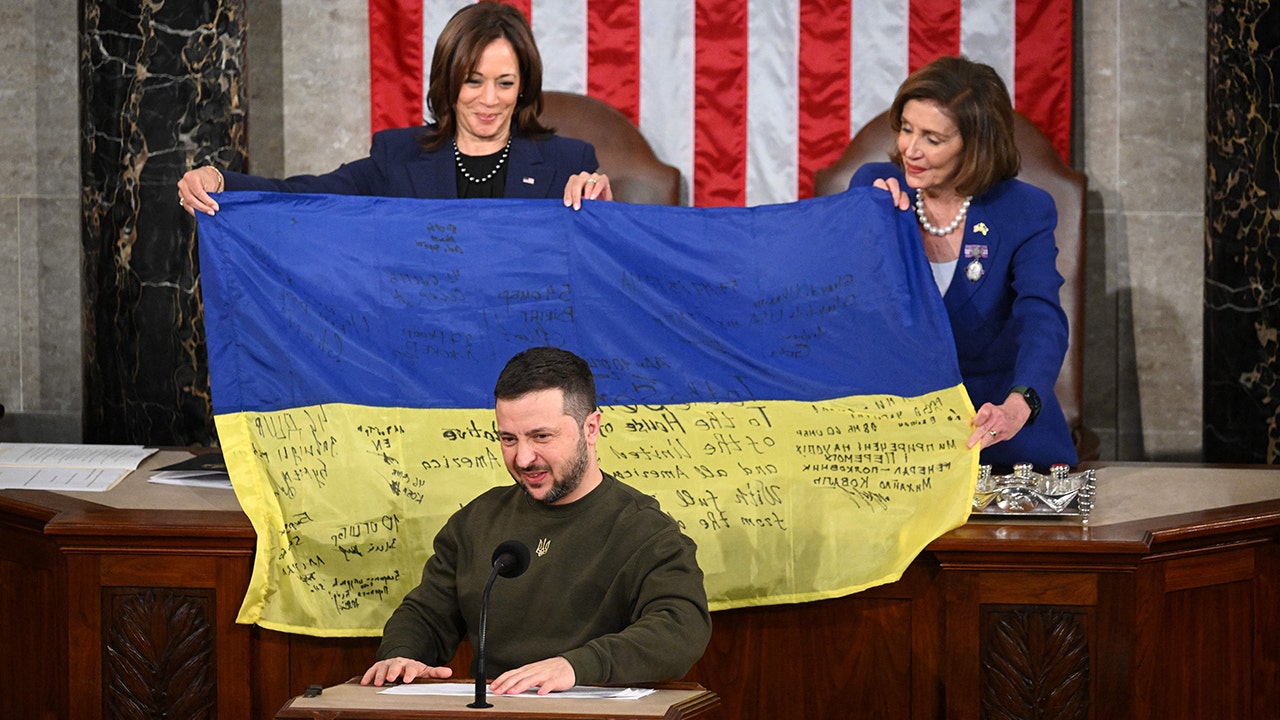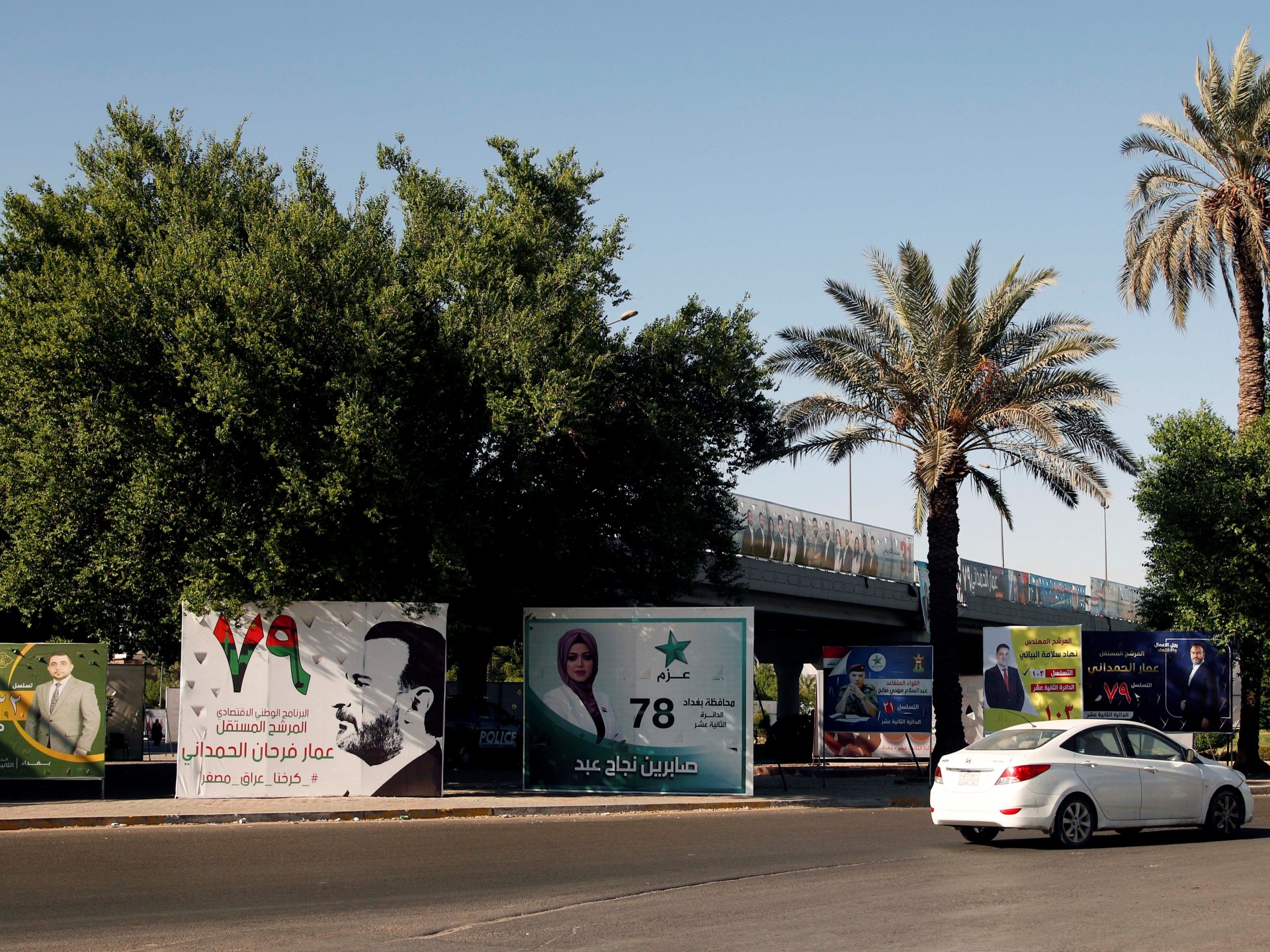World
Finnish PM grilled by progressive MEPs over far-right alliance
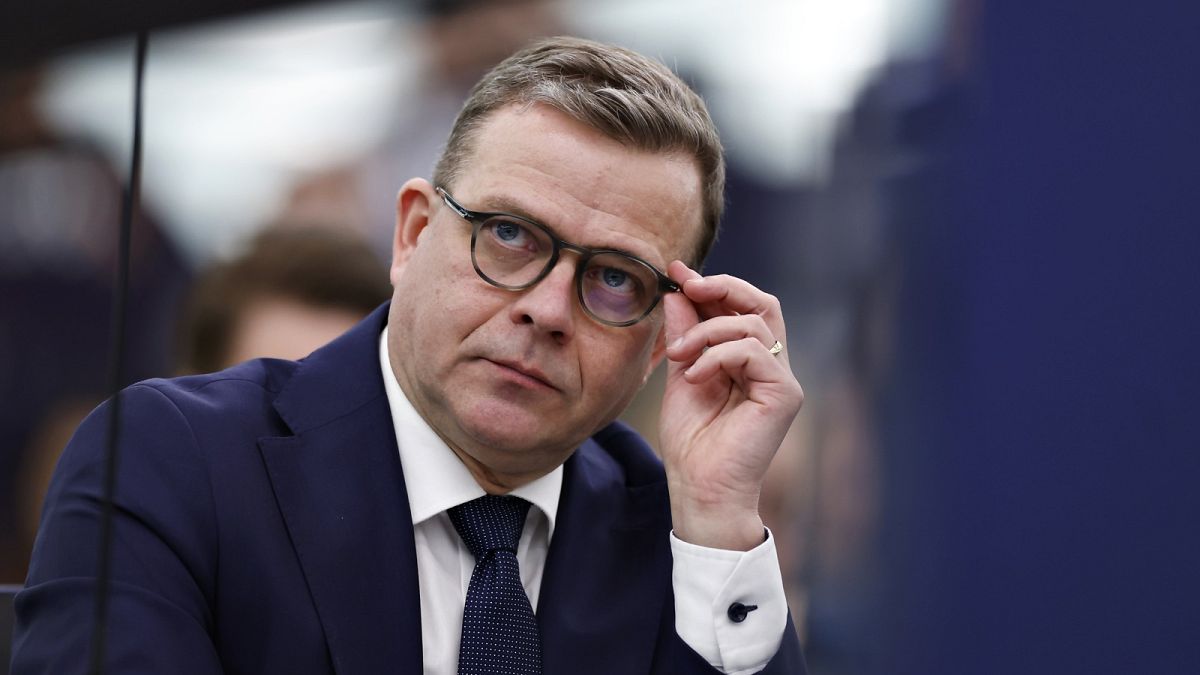
Finland’s prime minister addressed on Wednesday the European Parliament and outlined his political priorities for the next legislature.
“My government is committed to a strong European Union. An EU that acts not only reacts. We want to build a Union that takes care of our common security and works for our economy,” Petteri Orpo told lawmakers.
But the premier’s speech quickly descended into finger-pointing and recriminations over his alliance with the Finns Party, a populist, Eurosceptic party that has been plagued by racism, anti-Semitism and neo-Nazism scandals.
The Finns Party sits with the hard-right European Conservatives and Reformists group (ECR) in the Strasbourg hemicycle, while Orpo’s National Coalition belongs to the European People’s Party (EPP), the centre-right formation that holds the largest share of seats. Orpo’s cabinet also features members from the Swedish People’s Party of Finland (Renew Europe) and Christian Democrats (EPP).
Last year, one of the Finns Party’s ministers, Vilhelm Junnila, resigned after it was revealed he had made jokes about “Heil Hitler” and promoted abortions in Africa as a method to combat climate change. The party’s leader, Riikka Purra, was forced to apologise for making racist remarks about Turkish and Somali immigrants in the past.
Progressive forces see the Helsinki government as evidence of the increasingly blurred line between the traditional right and the extreme right, a phenomenon they say is spreading fast across the bloc and threatens the viability of European integration.
Iratxe García Pérez, the leader of the Socialists and Democrats (S&D), led the charge against the guest of honour, telling him: “Your only enemy is the far right.” The Spaniard also name-checked EPP President Manfred Weber, whom she considers to be the mastermind behind the ideological rapprochement.
“Your alliance with the far right is the real threat to our democracy and to the European project. This is why the future of the European Union is at stake,” García Pérez said.
“In times of uncertainty and great transformation, it is not enough to simply try to resist the reactionary wave. We have to move forward,” she went on.
“Mr Orpo, Mr Weber: put an end to your alliance with those who want to destroy Europe.”
Another point of contention was Orpo’s proposal for a Green Deal rethink after the elections to the European Parliament, scheduled to take place between 6 and 9 June. The Finnish PM urged the bloc to “recalibrate our climate policy and shift away from overly detailed regulation to fostering innovation.”
“We need carrots and incentives, not sticks and bureaucracy,” he said, prompting applause from EPP lawmakers, who have adopted a more critical stance on the Green Deal spearheaded by Ursula von der Leyen, the party’s most prominent politician.
Philippe Lamberts, co-chair of the Greens, took exception to Orpo’s pitch and argued Finland’s frugal stance on public spending was in “contradiction” with the goals of deploying renewable energy, as this entails significant expenses for all member states.
“Regulation sets ourselves targets and creates markets. So we need regulation,” Lamberts told him. “You cannot at the same time say we need more carrots, but then we don’t want to spend money on it. I mean, what are the carrots if it’s not public money?”
Lamberts also denounced Orpo’s cabinet, saying “people like us should never, never go into alliance with people who de facto consider some human beings as inferior.”
“That’s what you did in Finland. And I’m glad, Manfred (Weber), that your colleagues in Portugal are not going to do that,” he said, referring to the recent outcome of the legislative elections in Portugal, where the victorious conservatives have ruled out entering into a coalition with the far-right Chega party.
The criticism against Orpo, his political alliances and his economic reforms was extensively echoed by other progressive MEPs during the hour-long debate in Strasbourg, even if occasionally interrupted by expressions of support from right-wing and hard-right lawmakers.
Nicola Procaccini, co-chair of the ECR group, warmly welcomed the Finnish PM and said his electoral victory was “more important than you can ever imagine.”
“And even more significant was your choice to govern alongside the Finns Party. A notable member of our political family. You managed to resist the pressure of those who didn’t want a coalition between the EPP and the ECR,” Procaccini said. “If the centre right is united, it wins everywhere in Europe and the left knows this all too well.”
The ECR group is considered more ideologically tolerable for the EPP than the other Eurosceptic formation in the parliament, Identity and Democracy (ID), which encompasses the likes of National Rally (France), Alternative für Deutschland (Germany), Flemish Interest (Belgium) and the Freedom Party of Austria.
Von der Leyen and Weber have dismissed ID as “Putin’s friends” and rejected any possible cooperation with them. However, some members of the ECR, like Fratelli d’Italia (Italy), Civic Democratic Party (Czech Republic) and Sweden Democrats (Sweden) are seen as more suitable partners for the mainstream conservatives, as demonstrated by Orpo’s working arrangement with the Finns Party.
Opinion polls project a substantial increase in seats for both the ECR and the ID groups, which would weaken the grand coalition between conservatives, socialists and liberals.
At the end of the debate, the premier took the floor again to defend his coalition and double down on his political agenda, particularly on support for Ukraine, an issue that the EPP uses as a yardstick to distinguish palatable from unpalatable parties.
“Madame García Pérez and for many others: there (are) no far-right parties in my government,” Orpo told the hemicycle. “(The) Finnish government is pro-rule of law. It’s pro-democracy. It’s pro-equal gender rights. It’s pro-Ukraine. Pro-European Union. “

World
How the U.S. Humanitarian Pier in Gaza Will Work

A humanitarian pier the U.S. military will bring to the Gaza Strip is currently being assembled and is expected to be ready to receive initial shipments of food and other aid early next month, according to military officials. The effort to deliver aid to the enclave through a maritime corridor, which was announced in March, will involve an elaborate, multistep process.
A thousand American soldiers and sailors will be involved in the pier project, a senior military official said in a Pentagon call with reporters on Thursday. The pier will initially enable the transfer of about 90 truckloads of aid per day, the official said, and will eventually ramp up to 150 truckloads per day at full capacity.
U.S. authorities have said the pier is intended to supplement, not replace, existing aid deliveries over land. U.N. data indicates that land-based deliveries have risen slightly in recent weeks but still fall far short of vast need in the enclave. Dozens of Gazans have died from causes related to malnutrition and dehydration, and the United Nations’ World Food Program has said half of Gaza’s population of 2.2 million is starving.
Once aid reaches the shore, relief organizations that will distribute it within Gaza will face familiar dangers and obstacles amid ongoing Israeli bombardment.
1 Aid, primarily food, will be procured from countries around the world.
A majority of the aid will be food collected from several countries and transported to the Larnaca port in Cyprus.
A spokesperson for the U.S. Agency for International Development, which is working closely with the military to coordinate plans for the pier, said some of the items that would come through the maritime corridor would include nutrient-dense food bars, sourced from Dubai; foods intended to treat severe malnutrition in children, sourced from Kenya; and relief supplies, including hygiene kits, sourced from Europe.
Military officials have said other countries and organizations will also contribute food and money.
2
Shipments will be inspected in Cyprus under Israeli oversight.
At the Larnaca port, Israeli representatives will be present as Cypriot authorities inspect items, according to an Israeli official with knowledge of the inspection plans.
The official said the standards for inspection would be the same as those at the land crossings into Gaza. Aid officials have said those inspections are exhaustive and sometimes arbitrary.
World Central Kitchen, a disaster relief nonprofit, has tested the maritime corridor twice before at a smaller scale in March. The loading, scanning and inspection process for those two ships took between two and three days each, according to Juan Camilo Jimenez Garces, a regional manager for the organization. The first ship, a partnership with the Spanish nonprofit Open Arms, carried about 200 tons of aid, while the second carried more than 300 tons.
3
The sea journey will take at least 15 hours.
The roughly 250-mile journey from Cyprus to Gaza normally takes about 15 hours, or a full day of travel, but it could take up to a couple of days depending on the weight of the cargo and the type of vessel. For example, the Open Arms ship, which towed its cargo on a separate platform instead of carrying it onboard, made the journey in about three days.
Ships can also be delayed because of unfavorable weather conditions. That was one factor that held up the second World Central Kitchen ship, Jennifer, for about two weeks at Larnaca after it was scheduled to depart.
4
Aid will be shuttled from a floating platform near Gaza to a pier anchored to land.
Gaza has no international seaport; Israel has for decades prevented the construction of one. Because waters near the shore are too shallow for large vessels to approach the humanitarian pier directly, the United States is also building a floating platform two miles off the coast, where ships carrying aid will first offload their cargo.
Smaller Army vessels, known as L.C.U.s (for “landing craft utility”) and L.S.V.s (for “logistics support vessels”), will transport the aid in batches from the platform to the pier.
Note: Distances are not to scale.
The New York Times
At least 14 U.S. ships are involved in the building and operation of the pier, according to a military official — some carrying necessary heavy machinery and equipment. U.S. service members will build the pier at sea, using modular units eight feet wide and 20 or 40 feet long, and a long ferry will drag it to shore. It will then be anchored by Israeli forces on the shore in northern Gaza to ensure there are no U.S. boots on the ground.
Humanitarian aid officials involved in receiving and distributing the aid have pushed to keep their engagement with the Israeli military as limited as possible.
5
Aid will have to be taken into Gaza by truck, but safe distribution remains a challenge.
The World Food Program will help distribute aid inside Gaza after it arrives at the pier, the U.S. Agency for International Development said last week.
Trucks coordinated by aid groups will transport aid from a secure area near the pier to U.N. warehouses, of which there are more than 20 across Gaza, and then eventually to hundreds of community kitchens, shelters, smaller warehouses and other distribution points throughout the region.
A majority of the distribution points are in southern Gaza, where most of the population has been forced to evacuate, but demographers estimate that several hundred thousand people remain in the northern part of the enclave, where famine is imminent.
A small number of routes are available to the distribution trucks, because the Israeli military has limited road access and Israeli airstrikes have turned much of the landscape to rubble. As usual, the convoys will need to coordinate their movements closely with the Israeli military.
Source: United Nations Office for the Coordination of Humanitarian Affairs Note: Road accessibility based on a map released by OCHA on April 24.
The New York Times
Humanitarian road access in Gaza
Aid officials have emphasized that the most efficient method of delivering aid into Gaza remains through land routes, and they have expressed concern that the pier might deflect attention from efforts to increase the amount of aid delivered over land.
Several previous attempts at delivering aid to Gazans have ended in deadly tragedy. This month, Israel struck a convoy belonging to World Central Kitchen, killing seven of the group’s aid workers. Israel has also bombed an aid warehouse on at least one occasion, a strike it said was targeted to kill a Hamas commander.
Aid experts say the hunger crisis in Gaza is human-made, citing the decades-long blockade of the territory by Israel and backed by Egypt, Israel’s near-complete siege after Oct. 7 and its tight restrictions on aid-truck entry ever since. The U.N. has said that Israel’s restrictions of aid, destruction of infrastructure and displacement of Gazans may amount to the use of starvation as a war tactic.
Israel has pushed back, and its officials have blamed U.N. aid agencies for failing to distribute aid effectively. They have also said that Hamas, which rules Gaza and has been deemed a terrorist organization, has been systematically seizing aid. David Satterfield, the U.S. special envoy for humanitarian aid, said in February that Israel had not brought forward specific evidence of theft or diversion of U.N.-delivered aid.
Meanwhile, the humanitarian crisis has continued to grow more dire. Many Gazans have died seeking aid, including more than 100 who were killed while trying to get food from an aid convoy, according to Gazan health officials, and more than a dozen who drowned while retrieving airdropped aid that had fallen into the sea.
World
Climate activist who defaced sculpture at National Gallery of Art charged

A climate activist who smeared paint on a case surrounding 19th century French artist Edgar Degas’ “Little Dancer Aged Fourteen” sculpture at Washington, D.C.’s National Gallery of Art was charged.
Joanna Smith, 54, of Brooklyn, N.Y., got 60 days of prison time out of a possible maximum sentence of five years for defacing the historic statue, the U.S. Attorney’s Office in Washington, D.C., said in a release.
Judge Amy Berman Jackson also ordered Smith to serve 24 months of supervised release and 150 hours of community service, with 10 hours that must involve cleaning graffiti.
Smith also paid restitution for the damage to the Degas sculpture and was barred from entering the nation’s capitol and all museums and monuments for two years.
CLIMATE ACTIVISTS INDICTED FOR SMEARING PAINT ON DEGAS SCULPTURE CASE AT NATIONAL GALLERY
Joanna Smith and her co-conspirator sit after smearing paint on the case that houses Edgar Degas’ Little Dancer Aged Fourteen at the National Gallery of Art in Washington, D.C. (Ellie Silverman/The Washington Post via Getty Images)
Smith, along with other co-conspirators, traveled to Washington D.C. on April 27, 2023, and allegedly targeted the sculpture, the attorney’s office said.
The two allegedly smuggled the paint in plastic water bottles and had other conspirators film them smearing the paint of the base and the see-through case, while sometimes hitting the roughly 143-year-old priceless artwork with force, on their phones, according to the release.
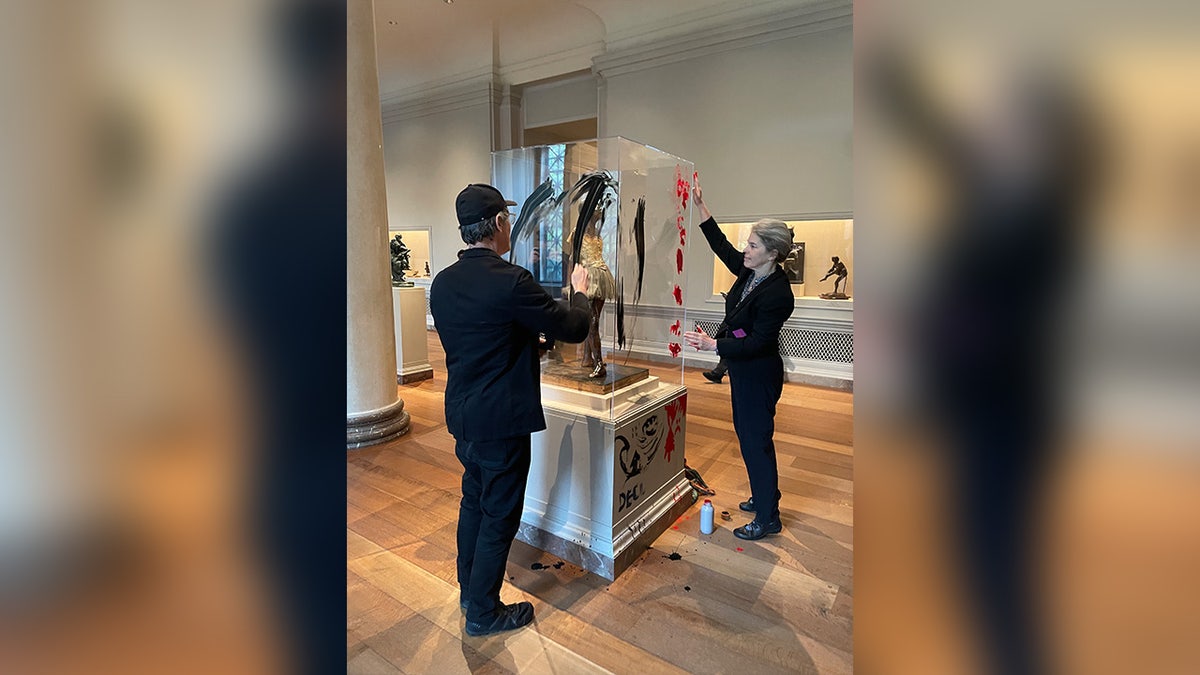
Joanna Smith and her co-conspirator smear paint on the case that houses Edgar Degas’s Little Dancer Aged Fourteen at the National Gallery of Art in Washington, D.C., on Thursday, April 27, 2023. ( Ellie Silverman/The Washington Post via Getty Images)
According to the government’s evidence, Smith, along with other co-conspirators, created video statements explaining their intent.
ACTIVISTS VANDALIZE SCOTLAND’S ‘BRAVEHEART’ MONUMENT IN CLIMATE PROTEST
They also alerted two reporters from the Washington Post who arrived and took photos of the vandalism.

Joanna Smith and her co-conspirator sit in front of Edgar Degas’s Little Dancer Aged Fourteen at the National Gallery of Art in Washington, D.C., on Thursday, April 27, 2023. (Ellie Silverman/The Washington Post via Getty Images)
The April 27 incident caused $4,000 in damage and forced staff to remove “Little Dancer” from the galleries for 10 days for repairs, the release said.
The case was investigated by the FBI’s Washington Field Office, specifically the FBI’s Art Crime Team, with assistance from the National Gallery of Art Police, and U.S. Park Police.
World
Russian forces gained partial control of Donetsk's Ocheretyne town

According to an Ukrainian spokesperson, Kyiv still has “fire control” over the invaded area.
Ukrainian officials confirmed Saturday that Russian forces has gained control over a third of village of front-line village of Ocheretyne in the Donetsk region.
Ocheretyne is located 15 kilometers from Avdiivka, a town captured by Russian forces in February 2024. The town has been one of the hottest sectors for Russia’s offensive in Ukraine.
“The part [of Ocheretyne] in which the enemy is located is under our fire control. All steps are being taken to push the enemy out of there,” spokesperson for the Khortytsia group of forces, Nazar Voloshyn, said, according to local media.
“Heavy battles are ongoing, the situation is under the control of Ukrainian defence forces,” the spokesperson added.
-

 Kentucky1 week ago
Kentucky1 week agoKentucky first lady visits Fort Knox schools in honor of Month of the Military Child
-
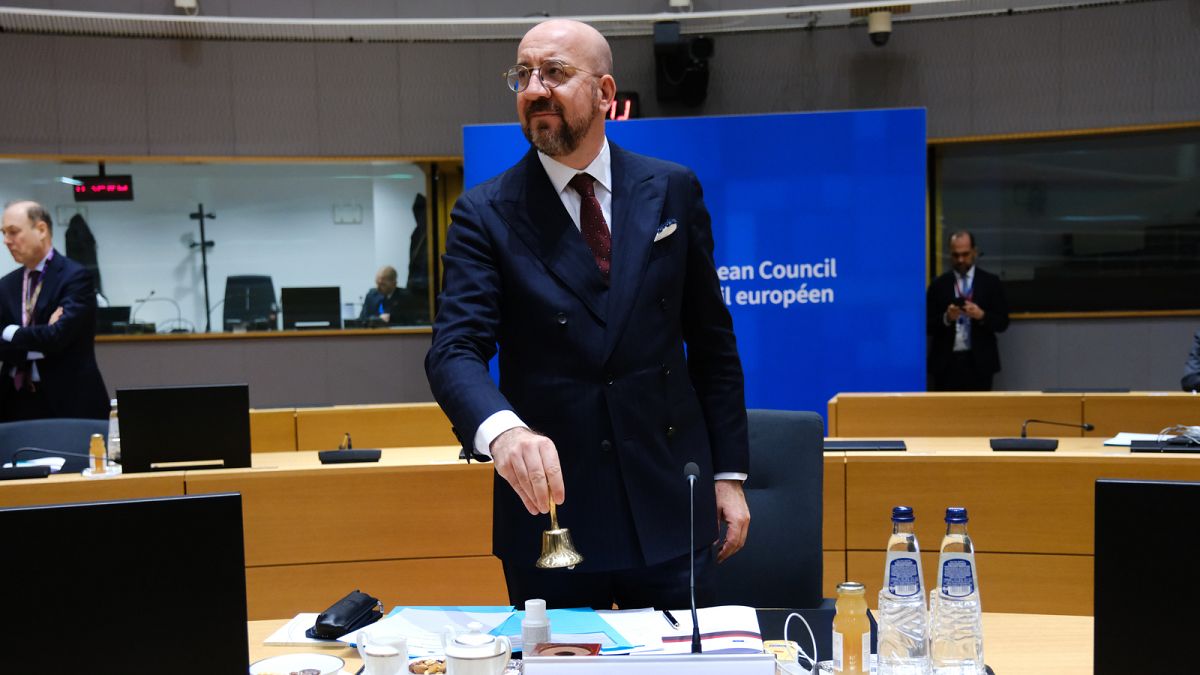
 World1 week ago
World1 week agoEU leaders weigh Lebanon partnership in response to Middle East crisis
-

 Politics1 week ago
Politics1 week agoFormer Wisconsin Democratic Rep. Peter Barca launches congressional comeback bid
-
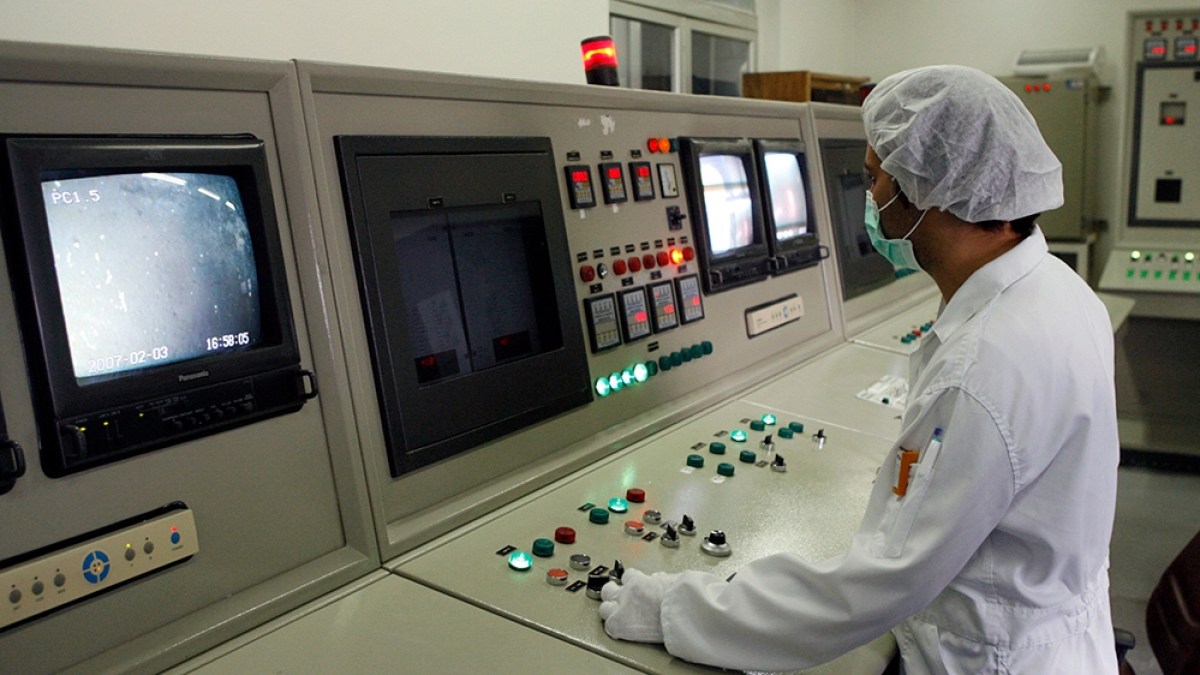
 World1 week ago
World1 week agoIsraeli attack on nuclear sites to prompt tit-for-tat, pursuing nukes: Iran
-

 News1 week ago
News1 week agoProsecutors say Trump violated gag order 7 times: Live updates
-

 Movie Reviews1 week ago
Movie Reviews1 week agoFilm Review: Challengers – The Knockturnal
-

 World1 week ago
World1 week agoIranian media says three drones downed after explosions heard in Isfahan
-

 World1 week ago
World1 week agoShipping firms plead for UN help amid escalating Middle East conflict


